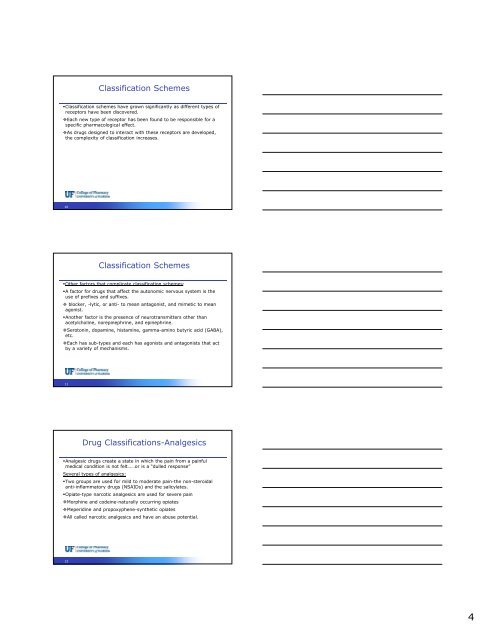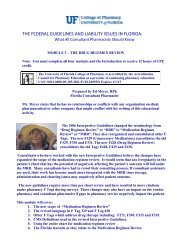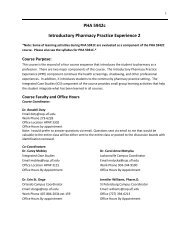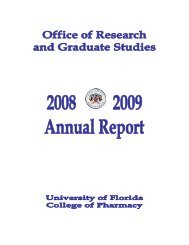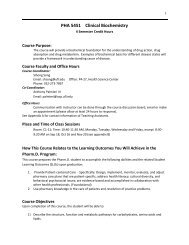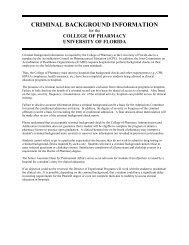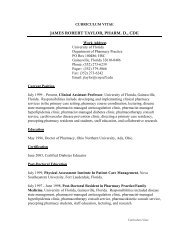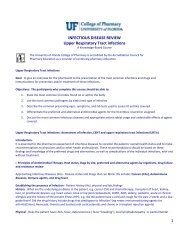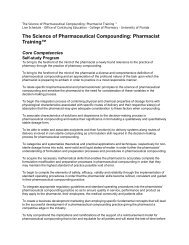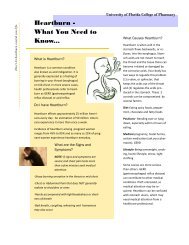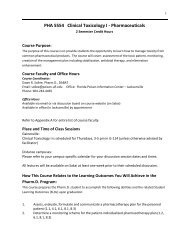Drug Classifications
Drug Classifications
Drug Classifications
Create successful ePaper yourself
Turn your PDF publications into a flip-book with our unique Google optimized e-Paper software.
Classification Schemes<br />
Classification schemes have grown significantly as different types of<br />
receptors have been discovered.<br />
Each new type of receptor has been found to be responsible for a<br />
specific pharmacological effect.<br />
As drugs designed to interact with these receptors are developed,<br />
the complexity of classification increases.<br />
10<br />
Classification Schemes<br />
Other factors that complicate classification schemes:<br />
A factor for drugs that affect the autonomic nervous system is the<br />
use of prefixes and suffixes.<br />
blocker, -lytic, or anti- to mean antagonist, and mimetic to mean<br />
agonist.<br />
Another factor is the presence of neurotransmitters other than<br />
acetylcholine, norepinephrine, and epinephrine.<br />
Serotonin, dopamine, histamine, gamma-amino butyric acid (GABA),<br />
etc.<br />
Each has sub-types and each has agonists and antagonists that act<br />
by a variety of mechanisms.<br />
11<br />
<strong>Drug</strong> <strong>Classifications</strong>-Analgesics<br />
Analgesic drugs create a state in which the pain from a painful<br />
medical condition is not felt……or is a “dulled response”<br />
Several types of analgesics:<br />
Two groups are used for mild to moderate pain-the non-steroidal<br />
anti-inflammatory drugs (NSAIDs) and the salicylates.<br />
Opiate-type narcotic analgesics are used for severe pain<br />
Morphine and codeine-naturally occurring opiates<br />
Meperidine and propoxyphene-synthetic opiates<br />
All called narcotic analgesics and have an abuse potential.<br />
12<br />
4


